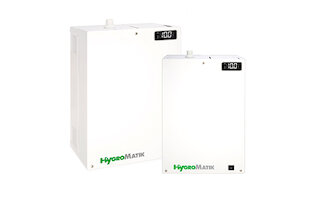A healthy atmospheric environment with optimum levels of air humidity can provide an ideal basis for increased employee performance and also save energy costs. Comfortable air humidity levels of 40-60% can are ideal for people’s motivation, concentration and well-being. For instance, at values of below 50%, the mucous membrane begins to dry out, which increases susceptibility to illnesses such as colds.
Humidified air binds dust particles much more quickly than dry air. The reduction of dust deposits and improved air circulation can have a positive effect on the respiratory problems of allergy or asthma sufferers.
Rooms should either be cooled or heated depending on the time of year, and it is possible to see the direct impact of relative air humidity in spaces that require temperature regulation. Adiabatic air humidification systems provide a sustainable, environmentally-friendly solution. If a room requires high heat loads from outside or inside, aerosol droplets in the air withdraw heat energy and ensure energy-efficient cooling. Should the relative humidity be reduced during the heat phase, moisture is projected into the air via the same system.
























